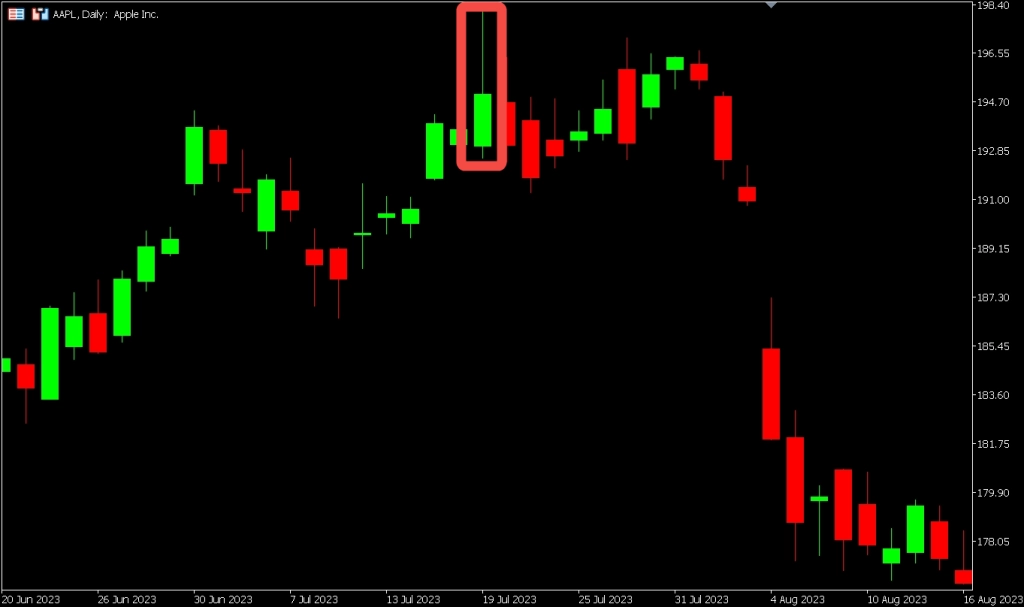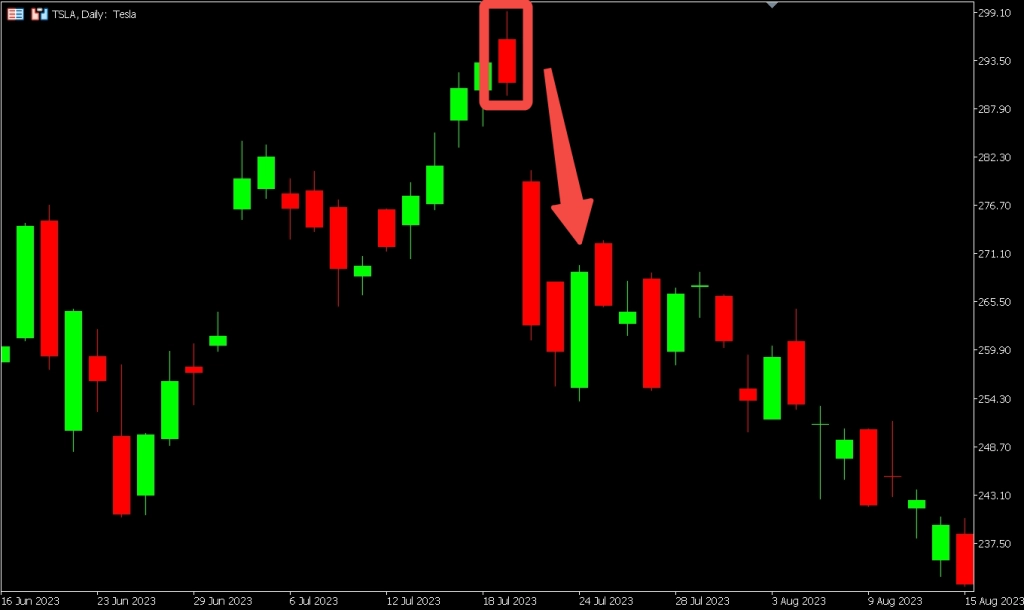
Scarica l'app
-
- Piattaforme di trading
- App PU Prime
- MetaTrader 5
- MetaTrader 4
- PU Copy Trading
- Web Trader
- PU Social
-
- Condizioni di Trading
- Tipi di Account
- Spread, Costi e Swap
- Depositi e Prelievi
- Tariffe e spese
- Orari di Trading

Scarica l'app

An earnings calendar is a tool used by traders to track the scheduled release of quarterly financial results from listed companies.
These reports often trigger sharp price movements, especially during earnings season when major firms report in close succession.
By using the earnings calendar, traders can prepare for periods of volatility, monitor key metrics like earnings per share (EPS) and revenue forecasts, and plan their trading strategy around these events.
Share CFDs allow speculation on price reactions to earnings without owning the underlying stock, but managing risk is essential due to the potential for sudden price gaps.
Whether trading before or after an earnings release, preparation and timing are key.
Key points:
Every quarter, listed companies release their results in what traders call earnings season.
These announcements often bring sharp price moves, especially in large companies that set the tone for the broader market.
Knowing when results are due and what analysts expect helps you prepare for this volatility.
That is where the earnings calendar comes in. It lists the release dates, expected earnings per share (EPS), revenue forecasts, and past results for each company.
For traders who use share CFDs, the earnings calendar is a key planning tool.
It does not predict direction, but it shows when volatility is most likely.
This guide explains how to read an earnings calendar, what numbers matter most, and how to use it alongside risk management when trading around company results.
An earnings calendar shows you when companies are scheduled to report their results and what the market expects. The key details to look for are:
Not every entry on the calendar will matter to you.
The easiest way to use it is to filter for companies you trade, sectors you follow, or major bellwethers that can move the whole market.
For example, if you trade technology CFDs, focus on firms like Apple, Microsoft, or Tesla.
If you trade financials, look at banks during their reporting weeks. Market cap also matters.
Large companies often set the tone for indexes, while smaller ones may only affect their sector.
Earnings calendars are available on financial news platforms, broker platforms, and research sites.
They often present the data in a simple table with columns for date, ticker, company, expected EPS, expected revenue, and release time.
When a company posts results, not every line of the report will move the market.
Traders usually focus on a few headline figures.
Earnings per share (EPS). EPS is net profit attributable to shareholders divided by the number of shares on issue.
It’s the most common benchmark analysts use, so any beat or miss against estimates can spark an immediate reaction.
Revenue. Sales numbers give a clearer view of the company’s ability to grow.
Sometimes a strong EPS can mask weaker revenue. In those cases, the market may still treat the update as disappointing.
Earnings surprises. If results differ sharply from forecasts, you get what’s called a surprise.
The bigger the gap between reported and expected numbers, the bigger the potential swing in the stock price.
Guidance. Management commentary on future quarters often matters more than the quarter just reported.
Updates on margins, demand, or costs can reset expectations in an instant.
Bellwether stocks. Large companies like Apple, Microsoft, or JPMorgan can sway indexes when they report.
Smaller firms may not move the benchmark, but they often set the tone for their own industry.
Earnings announcements often bring short bursts of volatility, which is why many traders treat them as events to prepare for.
Share CFDs are one way to trade around earnings.
They allow speculation on price moves without owning the underlying stock.
CFDs are widely available in regions such as Australia, the UK, and the EU. In the US, traders typically use options instead.
One common approach is event-driven trading, where you plan around the timing of the release.
Some traders look to capture the initial price swing when results hit.
Others wait for the first reaction to settle and then trade the follow-through.
In the options market, strategies such as straddles and strangles are often used to position for volatility.
A straddle involves buying both a call and a put at the same strike, while a strangle uses different strikes.
The goal is to benefit from a significant move in either direction.
For CFD traders, the key takeaway is that earnings often spark movement that can be sharp but short-lived.
Because results can cause sudden price gaps, risk management becomes critical.
Tools such as stop-limit and trailing stop orders can help manage downside, though they may not always execute at your desired level in fast markets.
Position sizing and limiting exposure to single announcements are also essential considerations.
There are two broad ways to trade around earnings.
Pre-earnings trading involves positioning ahead of the release, usually on expectations of a surprise or volatility spike.
Post-earnings trading focuses on the reaction after results are out, giving you clarity but possibly missing the initial move. Each has advantages and risks.
Trading during earnings season can be rewarding, but it comes with clear risks.
Volatility and price gaps. Results often trigger sharp moves at the open.
Prices can jump well above or below the prior close, which makes it harder to control entry and exit levels.
Limits of analyst estimates. Earnings forecasts are only estimates.
Companies can beat or miss them for reasons that are hard to predict.
Market reactions can also be emotional, with prices swinging more than the actual results might justify.
Execution risks. Even with stop-limit or trailing stop orders in place, fast markets may skip over your level before the order fills.
This can leave you with larger losses or gains than expected.
Being aware of these risks is as important as tracking the calendar itself. It helps you set realistic expectations and prepare for trading conditions that may be very different from normal sessions.

Earnings reports from large companies often move not just the stock itself but also the broader market.
Apple’s quarterly update in July 2023 is one example.
Analysts expected earnings per share of about 1.19 USD and revenue of around 81.7 billion USD.
Apple reported EPS of 1.26 USD, beating estimates, but revenue came in slightly below forecasts.
The market reaction was mixed.
Shares jumped in after-hours trading on the profit beat, but pulled back the next day as investors focused on the weaker sales figures.
For traders using an earnings calendar, the key takeaway was clear: Apple’s report was flagged well in advance.
Anyone following the calendar knew the exact date and time of the release, along with consensus estimates.
That preparation allowed traders to plan whether they wanted to position before the announcement, wait for the initial reaction, or stay out entirely.
This case also shows how different parts of a report can drive conflicting reactions.
A beat on EPS pushed the stock up, but softer revenue shifted the focus back to growth concerns.
It is a reminder that earnings season can spark moves in both directions, sometimes within the same session.

Another example of how the earnings calendar can be used came during Tesla’s Q2 2023 results.
Analysts expected earnings per share of 0.82 USD and revenue of about 24.5 billion USD.
When Tesla reported, EPS came in at 0.91 USD, beating forecasts, while revenue was roughly in line with expectations.
The initial reaction was positive, with shares jumping in after-hours trading.
But as management discussed narrower profit margins on the earnings call, the stock gave back gains the next day.
This shift showed how traders react not only to the headline numbers but also to forward-looking details.
From a trading perspective, the earnings calendar made the timing predictable.
Traders who positioned before the release faced the risk of a price gap overnight.
Those waiting until after the announcement could see how the stock responded in real time and decide whether to follow the momentum or step aside.
This example highlights two important points.
First, surprises relative to estimates can spark immediate moves, but the follow-through often depends on management’s guidance.
Second, using the earnings calendar is about preparation.
It lets you know when volatility is most likely so that you can adjust your risk and trading plan around those events.
Earnings reports are not only crucial for stock-specific traders.
Results from large companies often impact entire sectors, indices, and even global sentiment.
Traders who focus on index CFDs, ETFs, or broader market movements can use the earnings calendar to anticipate key volatility events.
When major companies like Apple, Microsoft, or JPMorgan release results, the market response can extend beyond the stock itself.
These firms carry significant weight in benchmark indices such as the S&P 500 or NASDAQ.
A strong earnings beat or miss can lead to noticeable shifts in index prices, even before regular trading opens.
For example, disappointing earnings from a major bank may pull down the financial sector, which in turn drags on broader equity indices.
Positive surprises can lift sentiment across similar companies, creating short-term momentum that traders may choose to follow.
Earnings season often reveals trends across industries.
If several technology companies report strong demand or improving margins, it may signal strength in the sector overall.
This can influence traders who use CFDs tied to sector ETFs or thematic indices.
By watching grouped earnings dates on the calendar, traders can build a case for sector bias.
Whether you are trading share CFDs or broader instruments, timing entries around these concentrated reporting periods can improve context and trade planning.
The earnings calendar is one of the simplest tools you can use to prepare for market-moving events.
It tells you when companies will report, what analysts expect, and where surprises may trigger volatility.
The main takeaways are straightforward. Focus on the calendar to know which reports matter for your trading universe.
Track key metrics such as EPS, revenue, and guidance, but remember that market reactions can shift quickly.
Use the calendar as preparation, not prediction.
Preparation and risk management are just as important as the numbers themselves.
Price gaps and sharp swings are common during earnings season, so position sizing, stop orders, and flexibility are essential.
On PU Prime’s platform, you can access earnings calendars and trade share CFDs around these events.
CFDs allow you to speculate on price moves without owning the underlying shares, but they involve risk and require careful management.
Earnings season will always bring uncertainty.
By using the calendar as part of your routine, you give yourself a clear framework for understanding when volatility is most likely to appear.
Trading during earnings season offers both opportunity and risk.
With so many companies reporting in a short time, the potential for price movement increases.
An earnings calendar helps you stay organised, focused, and ready to act.
It shows you when to expect announcements, what the market is pricing in, and where volatility may occur.
Whether you choose to trade before or after results are released, preparation matters.
Use the calendar to set alerts, watch key companies, and avoid being caught off guard.
With the right planning and risk management, earnings season can become a valuable part of your trading routine.
Tips for Traders:
PU Prime offers access to earnings calendars and the ability to trade share CFDs on global stocks through powerful platforms like MT5, WebTrader, and the PU Prime App.
Start preparing for earnings season with confidence.
They are analysts’ forecasts, not guarantees.
Companies often beat or miss them, which is why surprises can cause sharp price moves.
It is an unofficial earnings expectation that circulates among traders, often slightly higher or lower than the published consensus.
Market reactions can sometimes reflect how results compare to both this figure and the official estimate.
You can check financial news platforms, company investor relations pages, or broker platforms.
PU Prime also provides access to earnings calendars that cover major listed companies.
There is no single best approach.
Trading before the market opens lets you capture the full move but carries the risk of overnight price gaps.
Trading after the market opens gives you clarity on results, but may mean missing the initial reaction. Both approaches involve risk and require preparation.

Scambia forex, indici, Metalli e altro ancora a spread bassi e con un'esecuzione fulminea.
Registrati per un Conto Reale PU Prime con la nostra semplice procedura.
Finanzia senza fatica il tuo conto con un'ampia gamma di canali e valute accettate.
Accedi a centinaia di strumenti a condizioni di trading leader del mercato.

Please note the Website is intended for individuals residing in jurisdictions where accessing the Website is permitted by law.
Please note that PU Prime and its affiliated entities are neither established nor operating in your home jurisdiction.
By clicking the "Acknowledge" button, you confirm that you are entering this website solely based on your initiative and not as a result of any specific marketing outreach. You wish to obtain information from this website which is provided on reverse solicitation in accordance with the laws of your home jurisdiction.
Thank You for Your Acknowledgement!
Ten en cuenta que el sitio web está destinado a personas que residen en jurisdicciones donde el acceso al sitio web está permitido por la ley.
Ten en cuenta que PU Prime y sus entidades afiliadas no están establecidas ni operan en tu jurisdicción de origen.
Al hacer clic en el botón "Aceptar", confirmas que estás ingresando a este sitio web por tu propia iniciativa y no como resultado de ningún esfuerzo de marketing específico. Deseas obtener información de este sitio web que se proporciona mediante solicitud inversa de acuerdo con las leyes de tu jurisdicción de origen.
Thank You for Your Acknowledgement!